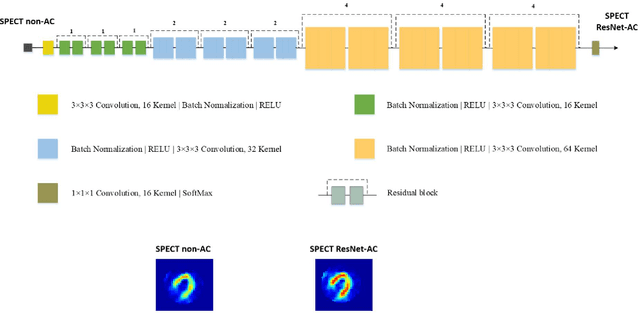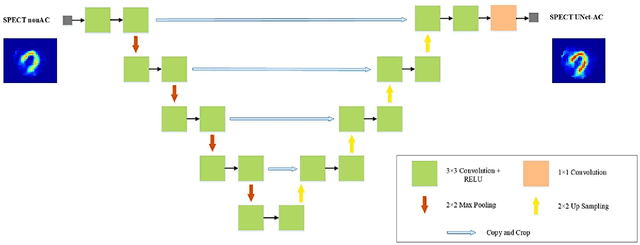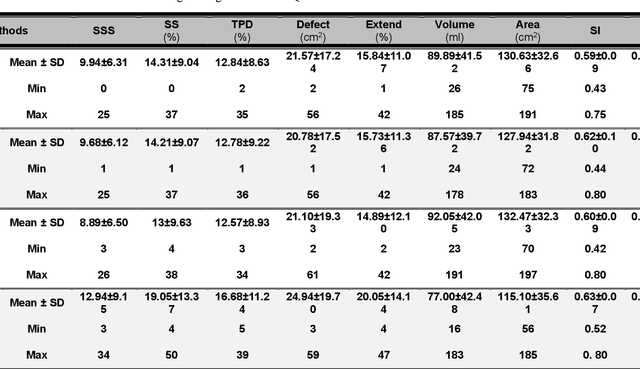Deep learning-based attenuation correction in the image domain for myocardial perfusion SPECT imaging
Paper and Code
Feb 10, 2021



Objective: In this work, we set out to investigate the accuracy of direct attenuation correction (AC) in the image domain for the myocardial perfusion SPECT imaging (MPI-SPECT) using two residual (ResNet) and UNet deep convolutional neural networks. Methods: The MPI-SPECT 99mTc-sestamibi images of 99 participants were retrospectively examined. UNet and ResNet networks were trained using SPECT non-attenuation corrected images as input and CT-based attenuation corrected SPECT images (CT-AC) as reference. The Chang AC approach, considering a uniform attenuation coefficient within the body contour, was also implemented. Quantitative and clinical evaluation of the proposed methods were performed considering SPECT CT-AC images of 19 subjects as reference using the mean absolute error (MAE), structural similarity index (SSIM) metrics, as well as relevant clinical indices such as perfusion deficit (TPD). Results: Overall, the deep learning solution exhibited good agreement with the CT-based AC, noticeably outperforming the Chang method. The ResNet and UNet models resulted in the ME (count) of ${-6.99\pm16.72}$ and ${-4.41\pm11.8}$ and SSIM of ${0.99\pm0.04}$ and ${0.98\pm0.05}$, respectively. While the Change approach led to ME and SSIM of ${25.52\pm33.98}$ and ${0.93\pm0.09}$, respectively. Similarly, the clinical evaluation revealed a mean TPD of ${12.78\pm9.22}$ and ${12.57\pm8.93}$ for the ResNet and UNet models, respectively, compared to ${12.84\pm8.63}$ obtained from the reference SPECT CT-AC images. On the other hand, the Chang approach led to a mean TPD of ${16.68\pm11.24}$. Conclusion: We evaluated two deep convolutional neural networks to estimate SPECT-AC images directly from the non-attenuation corrected images. The deep learning solutions exhibited the promising potential to generate reliable attenuation corrected SPECT images without the use of transmission scanning.
 Add to Chrome
Add to Chrome Add to Firefox
Add to Firefox Add to Edge
Add to Edge